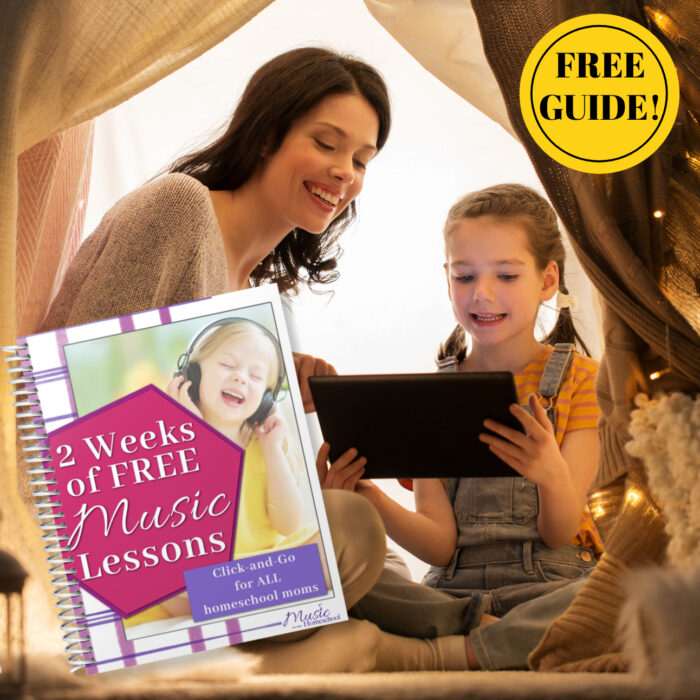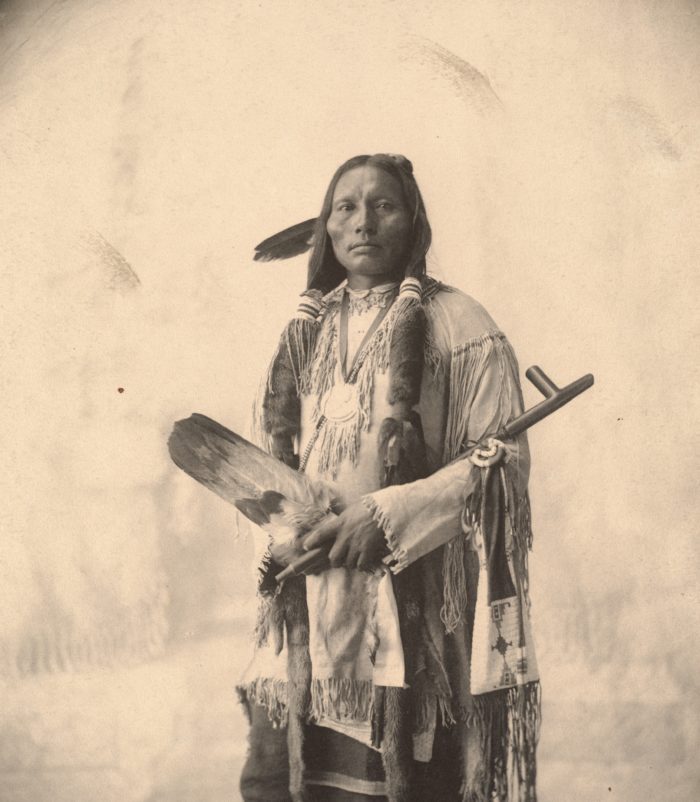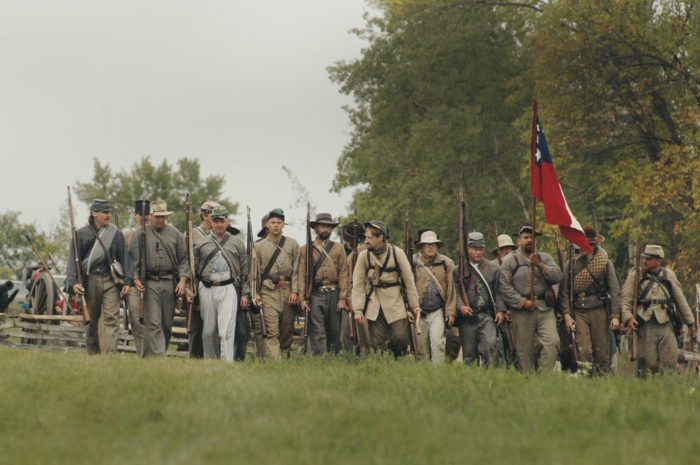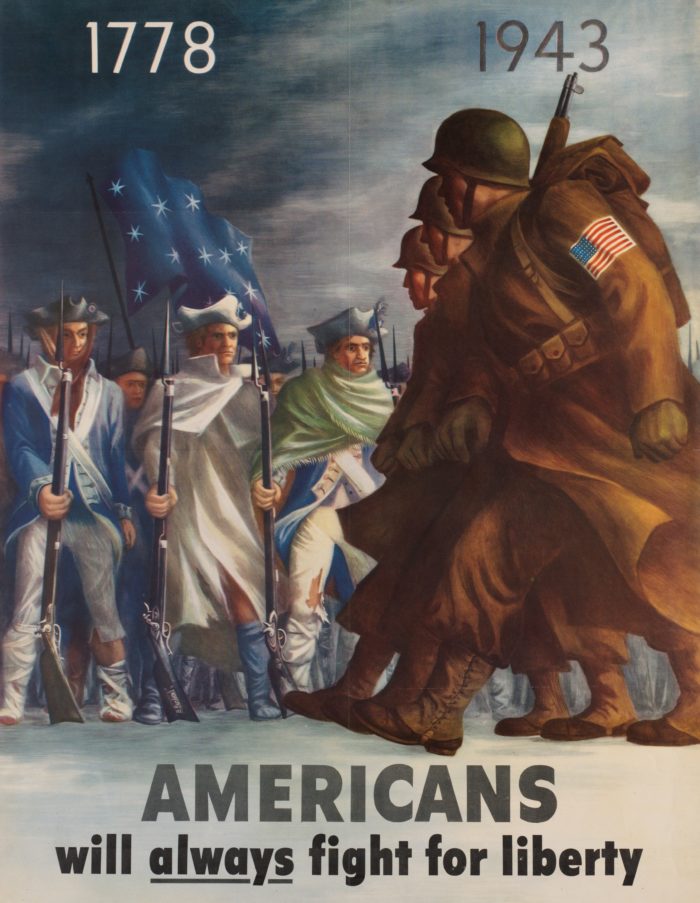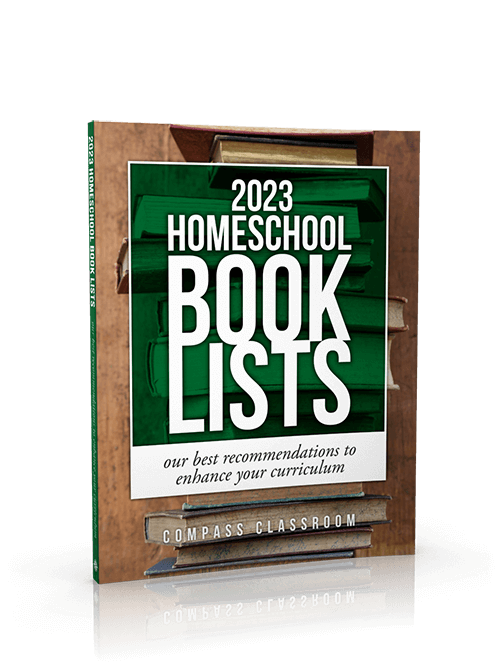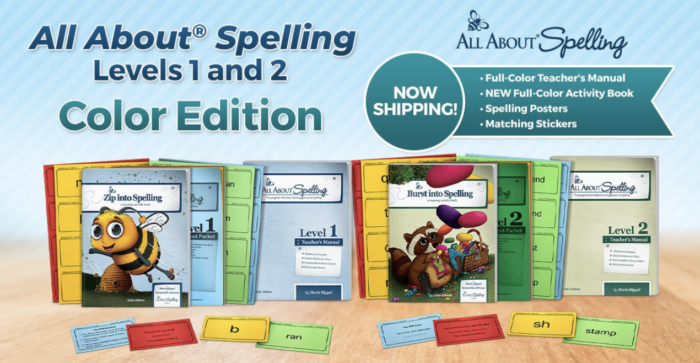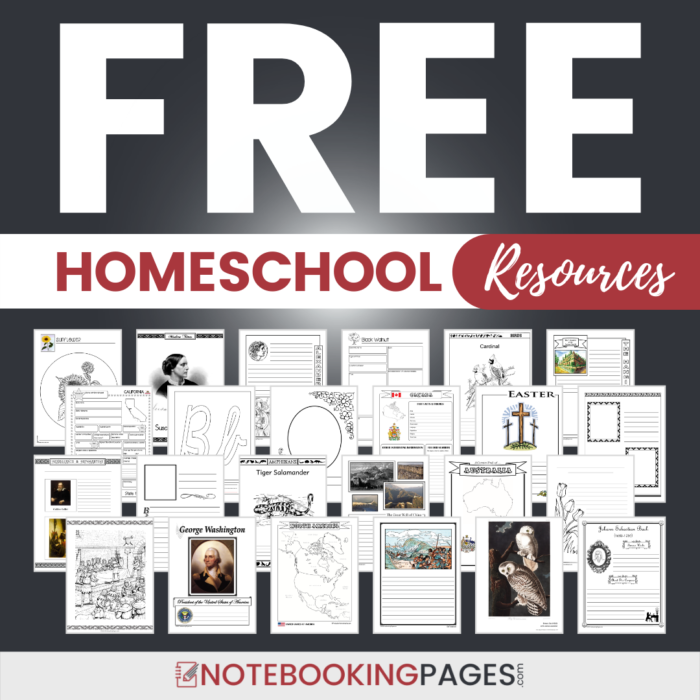Learning High School American History and Literature Should Go Hand-in-Hand
[Today’s post Learning High School American History and Literature Should Go Hand-in-Hand was written by guest contributor Michelle Habrych.]
I believe so strongly that learning high school American History and Literature should go hand-in-hand that I worked to combine curriculum and created something I used with my daughter and other students at our homeschool co-op a couple of years ago.
Disclosure: I get commissions for purchases made through affiliate links in this post.
Learning High School American History and Literature Should Go Hand-in-Hand
In high school, too many subjects are taught independently, when they really work better together. Therefore, I took American history and American literature and combined the subjects for a three-hour class. Here’s a look at the resources I used so you can do the same at home or with a co-op.
American Literature book
To start with, the previous time I taught American Literature I used James P. Stobaugh’s American Literature book and my friend taught the history component as a separate class. (See this post for more on this.) I decided to stick with that curriculum as a foundation for this class and then build upon it. I was designing this class for my daughter, who did not really enjoy history and did not test well. Of course, some of it would challenge her, but I also wanted to make it enjoyable for her to learn. I thought about the way I had used unit studies when she was in elementary school to learn history and built off that. (See more about that in “Tips for Teaching Homeschool High School Subjects.”)
Monthly American History Projects for Test Grades
To make this high school class more like the unit studies we did in the past, I created monthly history projects. These would count as a test grade. The entire year’s worth of projects was given to the students on the first day of class. There were no surprises. This would allow students more time to work on the projects if they desired. A project would be due each month.
Some were presented to the class, while others were simply turned in. Here is my list of American history projects:
August:
Native Americans:
Research one of these tribes affected by the European migration (Delaware, Powhatan, Iroquois Confederation, Aztec, Maya, Inca—will be randomly assigned)
Present the information in one of the following ways:
- Write a 5-page paper detailing the everyday life and traditions, discussing the ways the tribe was specifically affected by Europeans, mentioning notable leaders in the tribe and contributions the tribe made to the rest of the world
- Write and give a speech acting as a member (or historical leader) of the tribe, educating the class on the points mentioned in option 1
- Write a series of detailed journal entries which would help the reader to know the points mentioned in option 1
- Create a video using free online software (or your own equipment) educating the class on the points mentioned in option 1
- Be a journalist and create a newspaper with articles educating the class on the points mentioned in option 1.
You must turn in a Works cited list in MLA format; Due Sept. 13
September:
Founding Father or Mother:
- Choose one to research – you must tell teacher who you choose by Sept. 20
- Prepare to present a 5-minute presentation in front of the class on the life and important contributions of this person
- Use primary source documents as well as other sources
- Provide a works cited list in MLA format
- You may give a speech as the person or speak about the person
- You must use at least one visual aid (power point, artwork, presentation/poster board, craft)
- Due Oct. 18
October:
Westward Expansion and Explorers:
- Choose one of the following: Lewis & Clark, Zebulon Pike, Jedediah Smith, Donner Party, Robert Stuart, John C. Frémont, Daniel Boone, John James Audubon, Joseph Walker, Kit Carson, Charles Wilkes
- Learn where, when, and why he explored, what successes and failures/challenges he experienced
- What his relationship was with Native Americans, and any other interesting facts
Take this information and present it in one of the following ways:
- Write a 3-page paper detailing the explorer and the information mentioned above
- Write a series of detailed journal entries which would help the reader to know the points mentioned above
- Create a video using free online software (or your own equipment) educating the class on the points mentioned above
- Be a journalist and create a newspaper with articles educating the class on the points mentioned above
Must turn in a map showing the explorer’s travels as well as a works cited list in MLA format. Due Nov. 15.
November:
Civil War state project:
Choose one of the listed states to research in regards to its people, events, and culture during the Civil War (States to choose from: Virginia, Pennsylvania, Maryland, Georgia, Kentucky, Missouri, North Carolina, South Carolina, Mississippi, Alabama).
You will create a display board to show:
- Important people & leaders of that state
- Important battles fought there (including a map of them)
- The influence of Underground Railroad in the state
- Industry & economy in the state and how the war affects it
- How the state changed through the war
- Union or Confederacy.
- Include maps, graphs/charts, photos of people and items (be visual!)
- Creativity is encouraged (maybe also include recipes/cook, music, fashion, crafts)
You must turn in a works cited list in MLA format and present to the class (5 minutes). Due Dec. 13.
December:
Gilded Age:
Watch the History Channel Mini-series The Men Who Built America (available to rent from video store, get from library, possibly watch online, or borrow my set if you can’t find it).
Fill in the blank worksheets as you watch to help you gather information (they will be turned in for a separate homework grade so don’t forget!).
Pick one of the men and teach the class about him when we return in January.
You may choose to write a 3-5 page research paper or do one of these more creative projects:
- Advertisement
- Analysis and response to a case study
- Analysis of data or a graph
- Analysis of an event, performance, or work of art;
- Brochure; Chart, graph, or diagram
- Debate
- Description of a process
- Development of a product or proposal (perhaps to be judged by external judges)
- Diagram, table, chart, or visual aid
- Diary entry for a real or fictional character
- Executive summary
- Letter to a friend
- Literature review
- Newspaper article and editorial
- Poster (which could be presented to the class or a larger audience in a poster session)
- Poem, play, or dialogue
- Power point presentation
- Reflection by students on what they have learned
- Review of a book, play, performance, etc.
- Web page or video
- Work of art, music, architecture, sculpture, etc.
What to include?
- Must include facts about the person
- What did this person do and how did it come about that he became so famous
- How the person impacted the time in which he lived
- How the person has impacted US history
- What do you think about this person – Robber Baron or somewhat a hero.
The information must come from at least 2 more resources other than the videos. You will be required to turn in a Works Cited page in MLA format; due Jan. 10. You will bring it to class prepared to present it and teach us about your tycoon.
January:
Black History Month:
Chose one of these to watch:
- The entire Roots miniseries (either version)
Or four of the following movies:
- The Butler
- Race
- Tuskegee Airmen
- The Help
- Selma
- Free State of Jones
- 42: The True Story of a Sports Legend
- Disney’s Ruby Bridges
- Separate But Equal
- 12 Years a Slave
- Amistad
- Glory
- Remember the Titans
- Men of Honor
- Hidden Figures
Write a timeline of events from what you watched, highlighting what you considered to be important for race relations in the United States (and the world). Be detailed. Be prepared to discuss in class; You will be required to turn in a Works Cited page in MLA format; due Feb. 14
February:
You’re the teacher:
Read a WW2 historical fiction/non-fiction about a little-known event and prepare a presentation to educate the class. I will bring some choices to class to choose from but you may get your own choice approved by me. Prepare a 5-7 minute lesson on the event using whatever visual/audio aids you desire to enhance it (but don’t just show us a movie! You must demonstrate your knowledge). You will be required to turn in a Works Cited page in MLA format; due March 14
March:
Modern history:
Choose one of the following topics:
- Korean War
- Cold War
- Civil Rights Movement
- Vietnam War
- Roe V. Wade
- Desert Storm
- War on Terrorism
Then choose one of the following project options:
- Write a 5-page paper detailing the event, its importance, its consequences, etc. ;
- Write and give a speech acting as a person involved in the event, educating the class on the points mentioned in option 1
- Write a series of detailed journal entries which would help the reader to know the points mentioned in option 1
- Create a video using free online software (or your own equipment) educating the class on the points mentioned in option 1
- Be a journalist and create a newspaper with articles educating the class on the points mentioned in option 1
You must turn in a Works cited list in MLA format; due April 11
Final:
Take one thing from the following list and follow it through the history of the United States:
Things to choose from:
- Political cartoons
- Music
- Education
- Entertainment
- Weapons
- Jobs
- The role of children
- The role of women
- Sports
- Clothing (men, or women, or children)
- Dinner time
- Business
- Or an idea of your own—check with me first though!
Make a timeline including the following time periods:
- Native American, Colonial / Pilgrim
- The new America (Revolutionary period)
- Westward Expansion
- New Government (Constitution, etc.)
- Civil War
- Reconstruction
- Gilded Age, 1920’s
- WWI
- Great Depression
- WWII
- 50’s
- 60’s
- 70’s
- 80’
- 90’s
- Today
This can be presented on a power point or on a project board; you will be presenting it before the class. Be sure to include the time periods and say how it changed (improved or declined) from period to period. You will be required to turn in a Works Cited page in MLA format; due May 16
Download a copy of the history projects here:
Grading Rubric
I used a rubric for grading the projects. Students were given it in advance, so they knew what I would be grading on.
Variety of Assignments for American History and Literature
Since students have different learning styles, I offered different types of assignments for our American History and literature co-op class. It was not simply “write an essay.” They could write journal entries as the historical person, create a video to demonstrate their research, create a mini-newspaper on the topic, or even present a speech as the historical person involved. Some projects involved watching movies and writing about them. One even had the students teach a short lesson to the class! These projects meant history was more than just a name, date, and place to the students; it would help history to come alive, to even make it relevant to their daily lives.
I knew that with a three-hour class period, I could have more flexibility to show videos, try different presentations, and teach in a more interactive way with the students. I also recalled from the past experience that there were certain novels I was not going to read again, such as Hemingway, Faulkner, Melville, and a few others. The literature curriculum was robust enough that the students would still be learning in that portion of the class at an honors level. Cutting out some allowed us to focus on the other novels, plays, short stories, and poems without as much of a rush. Our co-op year has 32 weeks, and there are 34 lessons, so releasing a few greatly helped. To see a full list of the novels and works included in the curriculum, see the sample here.
Ways to Connect American History and Literature
Each week, I thought about what we would be learning in history and literature and considered which “subject” to start with. However, I tried to just blend them so the students would not think of them as separate. Whenever there was overlap, I made sure to point it out so they could better understand the interconnected nature of the things we studied. For example, if a piece was written in response to what was happening in the world around the author, we talked about it. Whitman’s “O Captain, My Captain” is a prime example and is studied alongside the Civil War.
Does your high schooler need American History next year? Try Dave Raymond’s video course for free! Click the green “Try Free Lessons” button.

More for History
As I mentioned, I knew I would have to do more for the history book, since it was not a traditional book explaining events that had happened. To enhance this, I sought out and found videos to show the students. We watched DriveThru History with Dave Stotts American History. The show has been repackaged since I taught it, so if you want to purchase the course guide and worksheets, you will have to get them with the videos. Some episodes are available on YouTube (such as here).
We also watched The History Channel’s America: The Story of Us. It’s available on History Vault or on DVD or YouTube here. Here is a link to the free teacher guides and study guides for those 12 episodes. I printed out the study guides for the students’ class binders. I asked them to follow along while they watched, and I used some of the questions from guides on their quizzes. We did some quizzes to gauge retention of what we were going over, but the grades on these were not worth as much as the project/test grades.
Crash Course History
Crash Course history videos can be helpful to get basic details about historical events in a short amount of time. I supplemented the class with these as well, available on Youtube.
Teachers Pay Teachers for the American Revolution
For specific time periods, I sought extra teaching help. The American Revolution has a lot of information that I wanted to make sure the students learned. I went to Teachers Pay Teachers and found
- this great timeline
- a map
- a battle chart
- a helpful powerpoint presentation
- and a chart to fill in major causes of the revolution
I used these items to teach about the revolution in line with the videos we watched, and based quizzes off them. In the literature portion of the class, the students were already reading The Autobiography of Benjamin Franklin, poet Phyllis Wheatly, Patrick Henry’s “Give Me Liberty or Give Me Death” speech, the Declaration of Independence, and a letter from Abigail Adams, as well as other related readings, so these resources worked well together with the videos.
Resources for Teaching Civil War and Abraham Lincoln
When we got to Civil War and Abraham Lincoln, I found some videos on YouTube to help explain and allow the students to better visualize what happened. Here’s my playlist. The website American Battlefield Trust proved to be a great resource as well.
Watching the 2012 movie Lincoln starring Daniel Day-Lewis was worth the class period it took up. There are questions you can find on a Google search to help students follow along during the movie; here’s one of the free ones.
Reading during this time period included literature such as Walt Whitman’s poetry, a study of the Gettysburg Address, The Narrative of the Life of Frederick Douglass, and much more. Learning about the time period and reading literature written during and in response to events was eye-opening for the students. The Adventures of Huckleberry Finn and Red Badge of Courage followed the study of the war.
Final Ideas for Learning High School American History and Literature
There are many more resources you can use if you want to expand your teaching of American History and Literature, including shows on History Vault or History Channel (The Men Who Built America, The World Wars, and others). These shows give students visual insight into times past. Teach literature to correspond with the time period being studied to really bring history to life. It’s as easy to bring these subjects together in high school, just as you may have done when they were in elementary years.
Michelle Habrych is a recent homeschool “empty nest” mom of two, having just graduated her last student after 16 years of homeschooling. She fell in love with history as a homeschool mom and has retired from teaching at her homeschool co-op as well.

